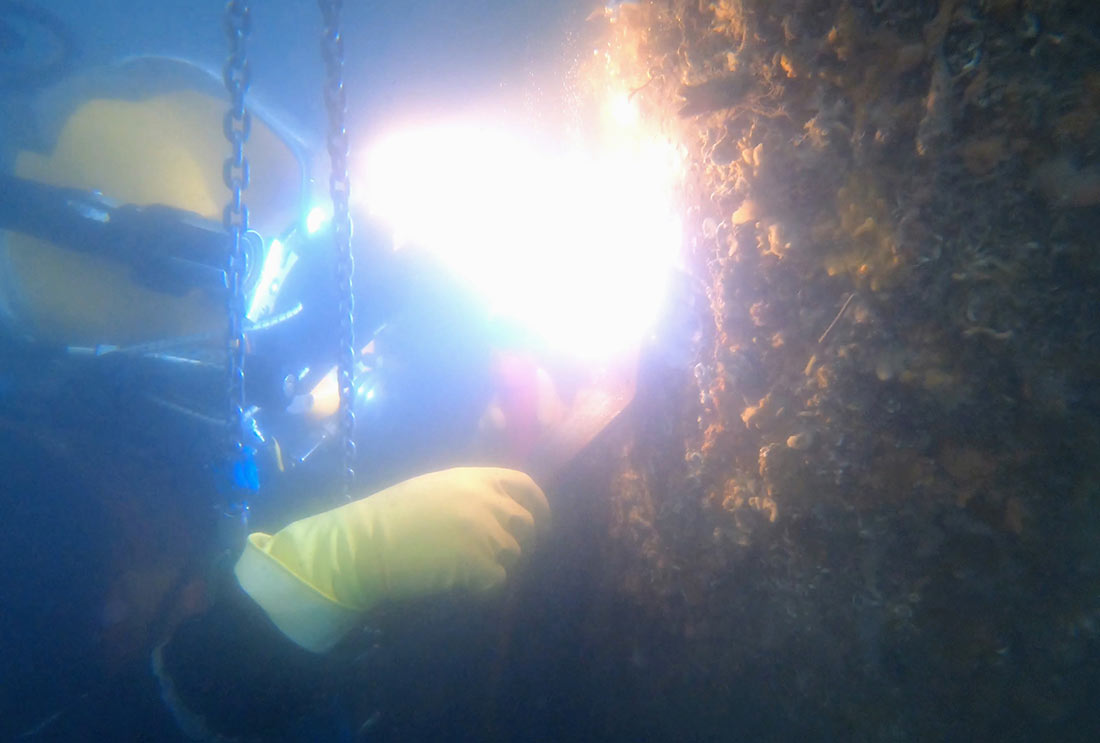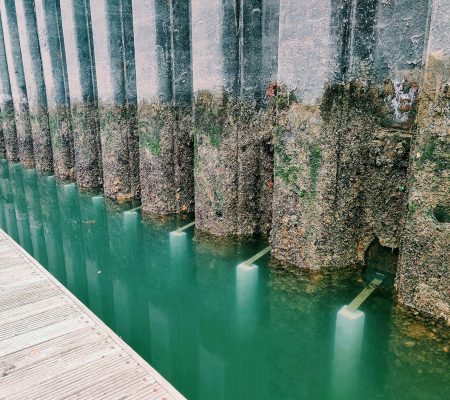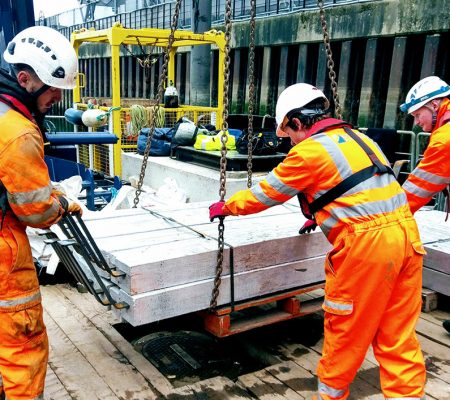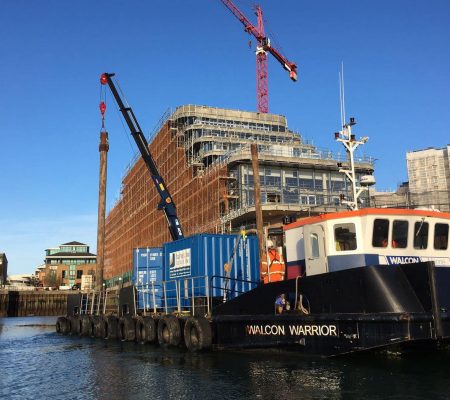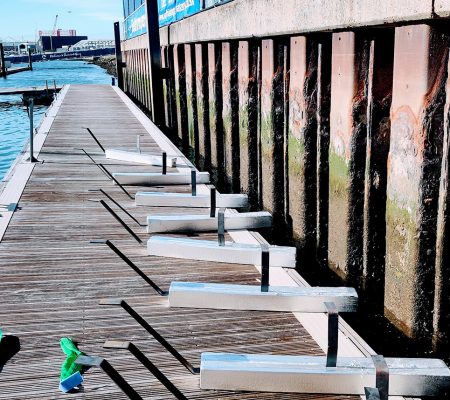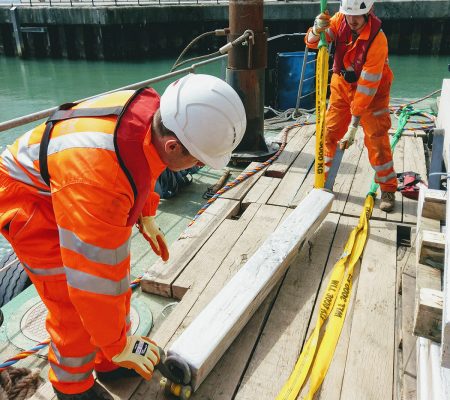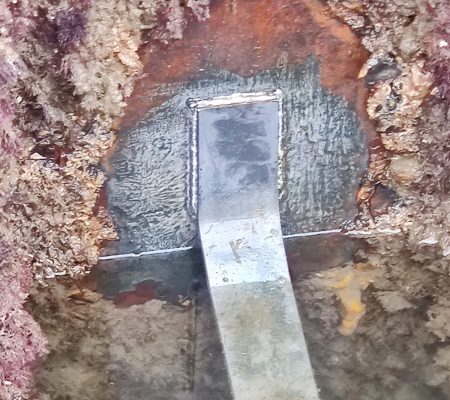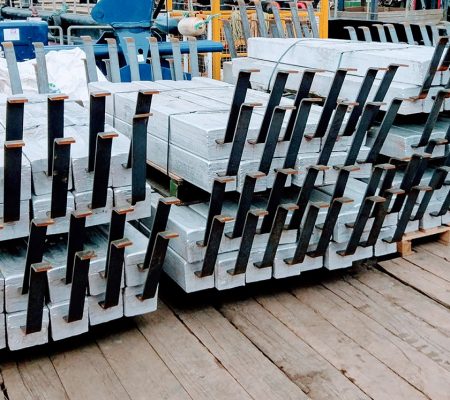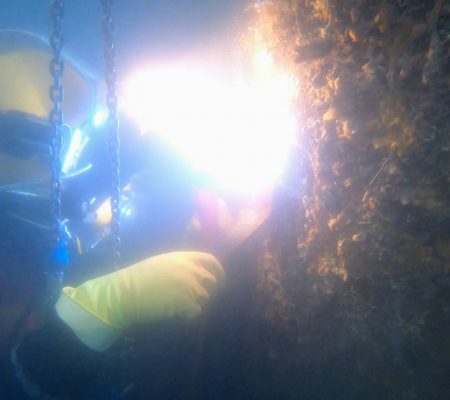Over the past 5 years, MSC has been engaged with a regular Client assisting them with a scheme to give their quey side sheet piles a new lease of life. We were asked if we could design, supply and install a cathodic protection system, as part of a larger protection package.
Marine Sheet Piles are usually mild steel and vary in thicknesses, length, and purpose. Their proximity to salt water and the oxygen in our atmosphere put them in harm’s way for corrosion and unless they are protected, they will degrade over time. Replacing them can be extremely expensive and problematic, with piling projects involving large, heavy plant and require lots of space and access. For many clients, allowing Marine Piles to fall into disrepair is not an option as the cost of letting them literally rot is even more than replacing them.
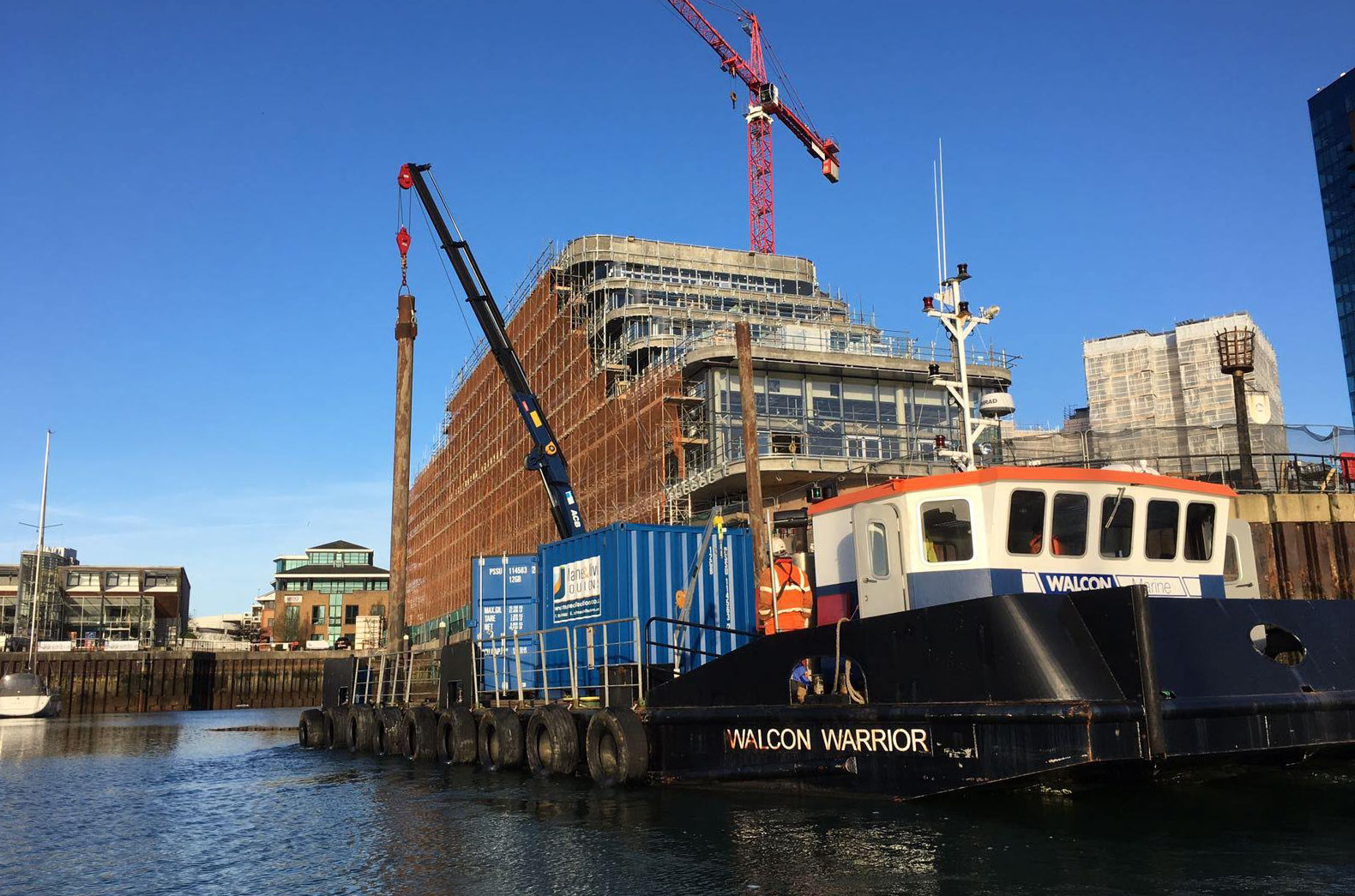
Ocean Village Anode Installations
Over the past 5 years, MSC has been engaged with a regular Client assisting them with a scheme to give their quey side sheet piles a new lease of life. We were asked if we could design, supply and install a cathodic protection system, as part of a larger protection package.
Marine Sheet Piles are usually mild steel and vary in thicknesses, length, and purpose. Their proximity to salt water and the oxygen in our atmosphere put them in harm’s way for corrosion and unless they are protected, they will degrade over time. Replacing them can be extremely expensive and problematic, with piling projects involving large, heavy plant and require lots of space and access. For many clients, allowing Marine Piles to fall into disrepair is not an option as the cost of letting them literally rot is even more than replacing them.
There are several different methods to help protect the steel and increase its working life, such as painting the steel with specialist Marine grade paint and installing sacrificial anodes. These methods are known as cathodic protection.
To start with, we engaged with a Cathodic Protection Engineer to concept an anode design that we could install. We worked with the designers to combine pile lengths, seabed levels and steel thicknesses to form a working design. We presented the design and supporting data in our tender to the Client and were fortunate enough to be awarded the project.
The projects included the installation of over 1000 anodes over 5 years on to steel sheet piles and tubes. MCS Employed the services of a support vessel with a HIAB to be used as a working platform to site the Diving and Support equipment on. We were so happy with the service that we got from them, that we returned to them each time the project entered the next phase.
The Brief was to utilise 2 working Divers to clean the piles where the anodes were to be positioned and then weld the pile underwater in the correct location. The Diver/Welders we have used for the projects over the years have extensive experience in underwater welding. We ensured that care was taken to achieve a level line as this was a major stipulation by the client. The Team all helped to develop the system that we used for the installation and each time we attended the site, the system was even more efficient than the previous project. There were some challenges including operating the dive vessel in and around tight spaces and keeping the supply of materials up with our rate of installation.
All of the Anodes were installed as per the designs by the cathodic protection engineers. We found having their expertise on board for the project was incredibly helpful and they were a always at the end of the phone if we had any design queries that needed clarification.
As with most of our projects, it wasn’t just the efforts of the site team that made the project run smoothly. The planning that went into the project before we arrived on site saved on time and budget. MCS Subsea will give your project the attention it deserves from the first Enquiry to the final handover. This is how we deliver excellent quality and value to all of our clients.
As with most of our projects, it wasn’t just the efforts of the site team that made the project run smoothly. The planning that went into the project before we arrived on site saved on time and budget. MCS Subsea will give your project the attention it deserves from the first Enquiry to the final handover. This is how we deliver excellent quality and value to all of our clients.
